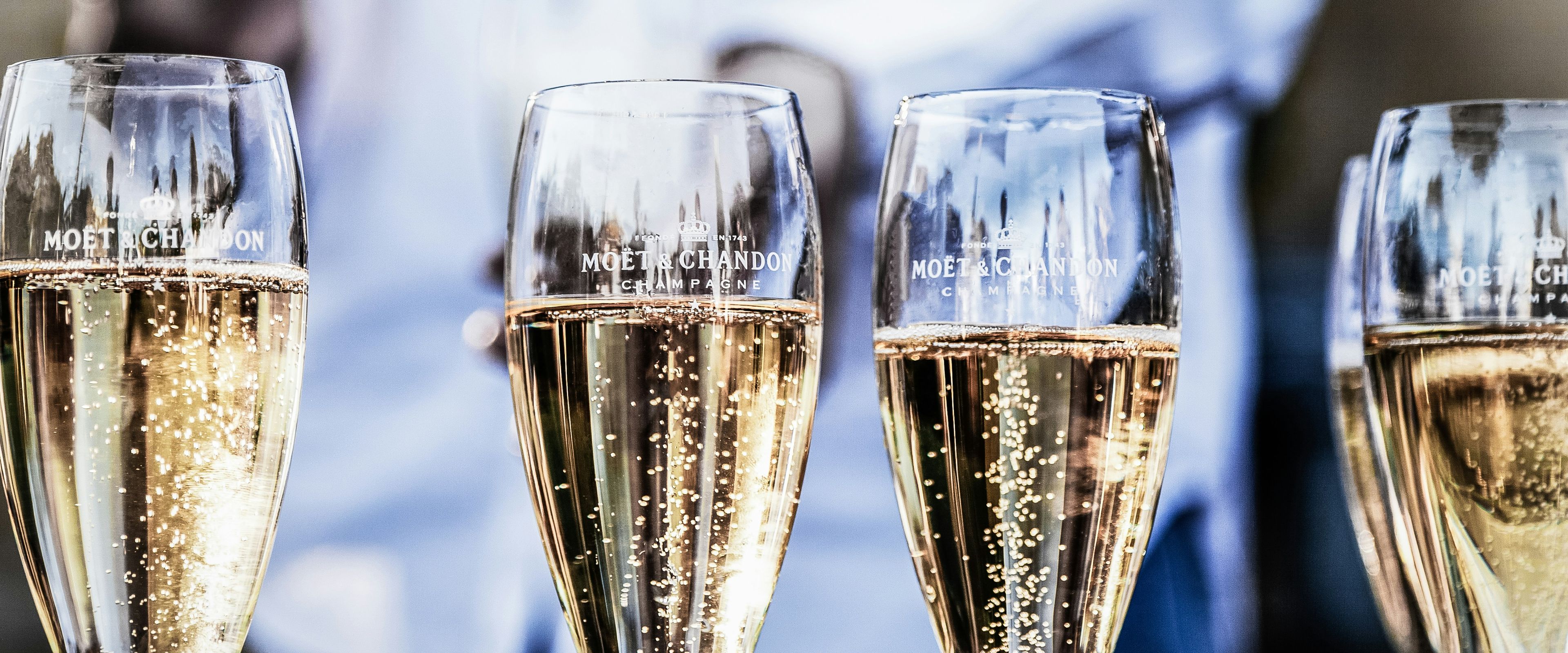
Asiakastapaukset
Yhtyköön kuplat!
Kuplat uuteen vuoteen
Uuden vuoden juhla on jo nurkan takana, ja se tarkoittaa, että on aika valita kuplat vuoden viimeistä (ja monille suurinta) juhlaa varten. Vuoden viimeinen päivä, ilta ja yö liittyvät väistämättä kupliin jollain tavalla. Katsotaanpa siis erilaisia kuohuviinejä ja mitkä ruoat niille sopivat parhaiten.

Erilaiset kuplat
Monet yhdistävät uudenvuodenaaton shampanjaan, ja onkin järkevää juhlia suurimpia hetkiä suurimmilla ja eksklusiivisimmilla kuplilla. On kuitenkin tärkeää huomata, että shampanjan lisäksi on myös muita kuplia, ja joissain tapauksissa nämä vähemmän tunnetut ja vähemmän eksklusiiviset kuohuviinit voivat sopia paremmin kontekstista riippuen.
Monille uudenvuodenaatto on synonyymi shampanjalle, ja se on varmasti juhlava tapa päättää/aloittaa vuosi. On kuitenkin tärkeää muistaa, että shampanjaa on monia erilaisia, ja jokainen niistä sopii eri tarkoituksiin. Yksi selkeä esimerkki on, kun kuivaa shampanjaa tarjoillaan makeiden ruokien kanssa. Se on yksinkertaisesti vääryys tuoreelle, elegantille ja kuivalle juomalle, sillä se maistuu happamalta ja kitkerältä yhdistettynä makeisiin, marsipaanitäytteisiin ruokiin.
Extra dry on ironisesti makeampi kuin se on kuiva, mutta se sijoittuu jonnekin asteikon keskivaiheille, mikä tekee siitä hyvän valinnan tervetuliaismaljaksi.
Wineandbarrels

Get a Handle on Champagne’s Sweetness Levels
To avoid a mismatch between champagne and food, it's helpful to understand the different sweetness levels within champagne (and for crémant and cava). Brut nature is the driest form of champagne and is truly bone-dry. Such a version pairs well with something crisp and salty, like chips, nuts, or olives. Extra brut is still very dry but more balanced and has good depth, making it a great choice for richer, more complex dishes like seared scallops or a salmon and tuna tartare. Brut is the most common type of champagne and doesn’t necessarily need a food pairing. It stands perfectly on its own or with light snacks, but it also pairs well with fresh fish and seafood.
Extra dry is ironically sweeter than it is dry, but it falls somewhere in the middle of the scale, making it a sensible choice for a welcome drink for those who find more conventional champagne too dry. Moving into the sec category, we enter the sweeter territory, which either requires a sweet tooth or the previously mentioned kransekage. The last two varieties are demi-sec and doux, both of which contain a significant amount of residual sugar but are very rare. If you come across a bottle like this, it’s best served with fresh berries or another light and sweet dessert.

Crémant, Cava, Prosecco
Crémant is similar to champagne in many ways, made with the same grapes (Pinot noir, Pinot meunier, and Chardonnay) and using the same method. The difference is that crémant doesn’t come from the Champagne region but can be found throughout the rest of France, such as in Burgundy, Loire, or Alsace. In terms of taste, you can also distinguish between different levels of dryness, just like with champagne, but overall, crémant tends to be softer, rounder, and almost intentionally creamier, as the name suggests. It also offers great value for money, so if your budget doesn’t quite stretch to champagne, crémant is an excellent alternative.
Cava is Spain’s answer to sparkling wine, and it almost always comes from Catalonia, made from the grapes Parellada, Xarello, and Macabeo. Cava tends to be a bit rougher and less elegant in style compared to champagne, but you really get a lot for significantly less money. Like champagne, cava also comes in various sweetness and dryness levels, and during the summer, a fresh rosé version is a perfect choice.
Prosecco comes from Veneto in northern Italy and likely brings to mind an Aperol Spritz, a classic welcome drink, especially in summer. On its own, prosecco is softer, more frothy, and slightly sweeter in taste compared to champagne, crémant, and cava, and it’s this sweet taste of peaches and almonds that makes it great for mixing in drinks or for those with a sweeter tooth. If you find a sweeter prosecco, it’s a perfect match for kransekage when the clock strikes midnight on New Year’s Eve. It’s also worth noting that if a bottle of prosecco says “extra dry,” it’s not bone dry, but rather, the Italians’ way of saying that it’s at least not overly sweet.
Moscato (or Moscato d’Asti) is one of the sweetest forms of sparkling wine on the market and typically has an alcohol content of no more than 7%. For many, it’s an ideal aperitif in the summer or a great topping for sorbet.
Wineandbarrels

New Year's Eve Equals Champagne
For many people, New Year's Eve is synonymous with champagne and oysters, or champagne and kransekage, but unfortunately, this isn't always the best pairing. Due to the intense, salty flavor of oysters, they almost always overpower the champagne and leave a metallic aftertaste in your mouth. It can help to drown the oysters in lemon, but then much of their natural flavor will be lost. If you insist on having oysters for New Year's Eve, dry sherry is actually a better match, which you can read more about here.
Similarly, when it comes to kransekage at midnight, champagne can certainly work, but make sure to avoid the dry varieties. At the very least, you’ll want to go with a sec or demi-sec, and ultimately, it might be better to go with prosecco or Moscato d'Asti.
Glassware is, of course, also an important component. Most people opt for the classic tulip-shaped champagne glass. This makes sense since the narrow opening is designed to hold in the bubbles. That said, it can also work with glasses that have a wider bowl, where the opening narrows at the top. The idea here is that the wider surface allows the bubbles’ aromas to be released more easily, making it a more sensory experience.
Cheers and Merry Christmas and Happy New Year!